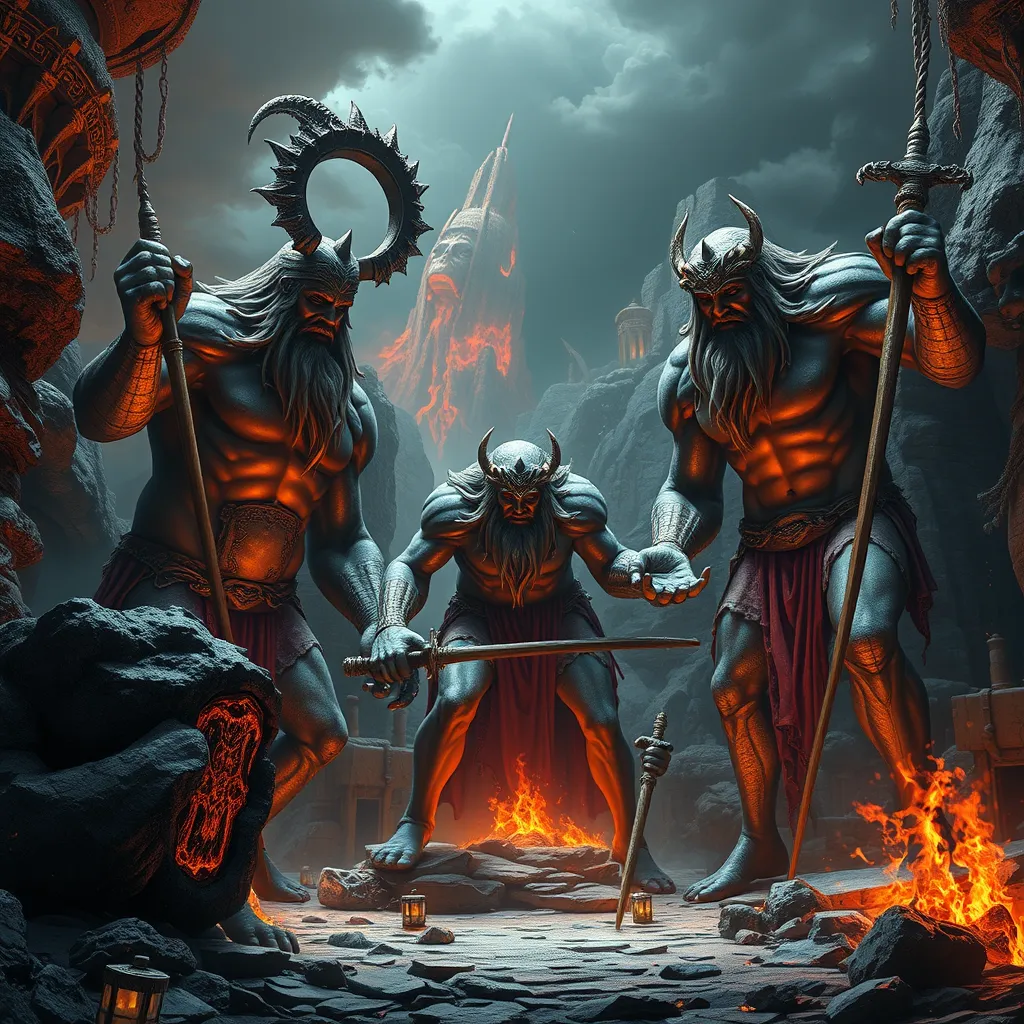The Gigantes of Roman Mythology: The Giants of the Underworld
I. Introduction to Roman Mythology
Roman mythology is a rich tapestry of stories and beliefs that shaped the cultural and religious landscape of ancient Rome. It combines the influences of earlier Etruscan and Greek traditions, resulting in a unique set of deities, myths, and legends. The significance of Roman mythology lies in its ability to explain natural phenomena, justify social norms, and provide moral lessons through captivating narratives.
Among the many figures in Roman mythology, the Gigantes stand out as formidable beings associated with the earth and the Underworld. These giants, often depicted as monstrous and powerful, embody the chaotic forces of nature and the struggles between divine and mortal realms.
II. The Origins of the Gigantes
The origins of the Gigantes can be traced to various creation myths in Roman lore. Some accounts suggest that they were born from the blood of Uranus, the sky god, when he was castrated by his son Cronus. This violent act led to the emergence of the Gigantes from the earth itself, symbolizing their connection to the primal forces of nature.
In exploring the parallels with Greek mythology, the Gigantes can be compared to the Titans, who similarly represent the might of primordial forces. While the Titans are often seen as the progenitors of the gods, the Gigantes serve as their adversaries, challenging the Olympian deities and representing the chaotic elements that the gods must overcome.
III. Characteristics and Attributes of the Gigantes
The Gigantes are typically described as towering figures, often depicted with immense strength and formidable features. Their physical descriptions vary, but they are generally portrayed as having:
- Enormous size, dwarfing mortals and even gods
- Wild, unkempt hair and fierce expressions
- Attributes of nature, such as rocks and trees incorporated into their forms
In addition to their physical prowess, the Gigantes possess a range of powers, including:
- Control over the earth and natural elements
- Immortality, making them formidable opponents
- Ability to instigate chaos and disruption in both mortal and divine realms
Symbolically, the Gigantes represent the untamed aspects of nature, as well as the struggles against authority and order. Their chaotic nature serves as a reminder of the potential for disruption in the world, challenging the status quo upheld by the gods.
IV. The Role of the Gigantes in Roman Myth
The interactions of the Gigantes with gods and mortals are integral to their role in Roman mythology. They often serve as antagonists in myths, representing the forces of chaos that the gods must confront. One of the key myths involving the Gigantes is the Gigantomachy, a battle between the giants and the Olympian gods.
In this epic conflict, the Gigantes sought to overthrow the gods, believing themselves entitled to divine power. However, the gods, aided by heroes and other divine beings, ultimately triumphed. This myth encapsulates the themes of struggle and order versus chaos, highlighting the importance of maintaining balance in the universe.
V. The Underworld: A Realm of the Gigantes
The Underworld, known as the realm of the dead in Roman beliefs, holds significant connections to the Gigantes. This dark domain is ruled by deities such as Pluto (Hades in Greek mythology) and is often depicted as a place filled with shadows and lost souls. The Gigantes are believed to have a strong presence in the Underworld, reflecting their ties to the earth and the afterlife.
The connections between the Gigantes and Underworld deities reveal a complex relationship, as they are sometimes portrayed as guardians of the Underworld, embodying the chaotic nature of death and the unknown. Their presence serves to remind mortals of the inevitable fate that awaits them, reinforcing the themes of mortality and the natural cycle of life and death.
VI. The Gigantes in Art and Literature
The representation of the Gigantes in Roman art and sculpture illustrates their significance in mythology. Artists often depicted them in dramatic poses, showcasing their immense size and strength. Common themes in art include:
- Battles against the gods
- Scenes of chaos and destruction
- Symbolic representations of nature’s power
In literature, the Gigantes have influenced various writers and poets, serving as symbols of rebellion and the darker aspects of existence. Their stories have been adapted and reinterpreted through the ages, leaving a lasting impact on cultural narratives.
VII. Legacy of the Gigantes in Modern Culture
The legacy of the Gigantes is evident in contemporary storytelling and media. They have found their way into modern literature, films, and video games, often depicted as powerful adversaries or symbols of chaos. Examples include:
- Fantasy novels that feature giants as antagonists or allies
- Films that portray epic battles between gods and giants
- Video games that include giant creatures as formidable foes
These representations highlight the enduring fascination with mythological giants and their relevance in exploring themes of power, chaos, and the struggle against authority.
VIII. Conclusion
In summary, the Gigantes hold a prominent place in Roman mythology, representing the chaotic forces of nature and the eternal struggle between order and chaos. Their stories and characteristics reflect fundamental aspects of human existence, such as the fear of the unknown and the inevitability of death.
The lasting impact of the Gigantes on culture and society can be seen in their continuing presence in modern interpretations of mythology, where they serve as powerful symbols that resonate with contemporary audiences. Through their narratives, the Gigantes remind us of the primal forces that shape our world and the eternal dance between creation and destruction.




